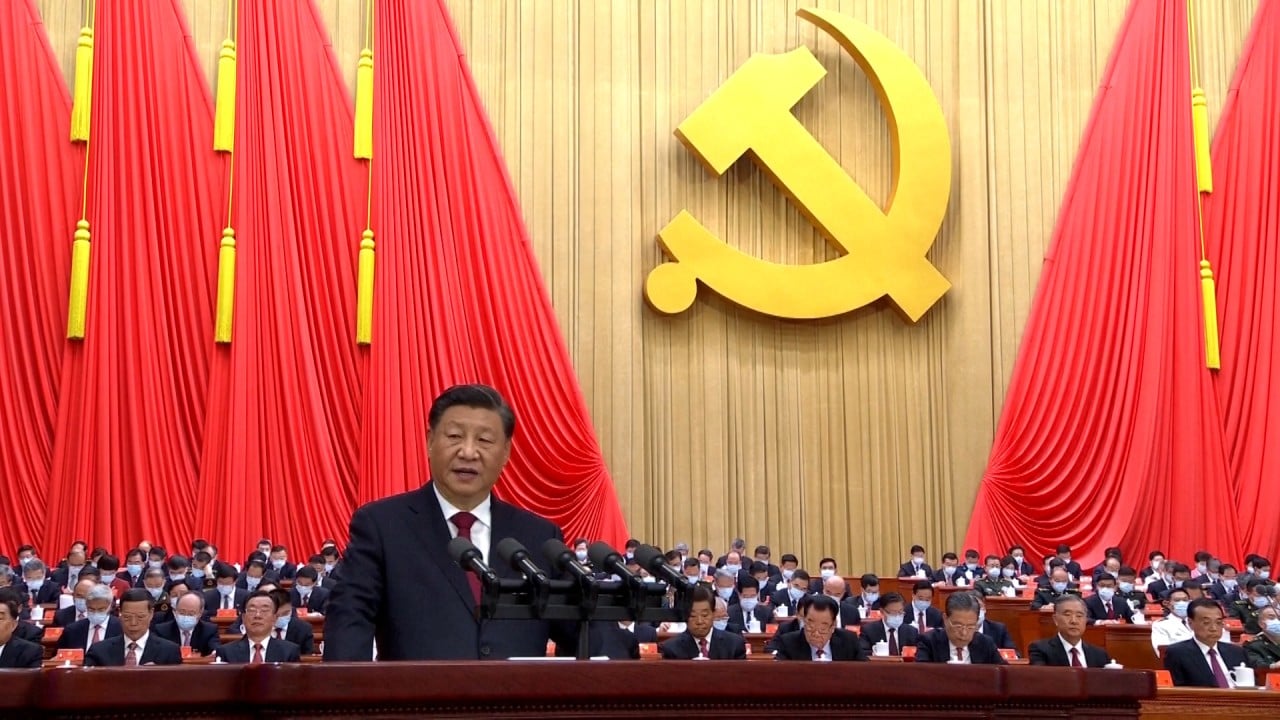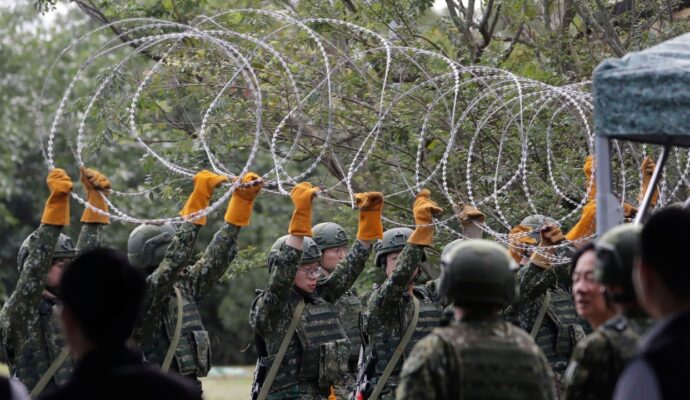
“Chinese style of modernisation has debunked the myth that modernisation means westernisation,” Xi said on Tuesday. “The Chinese model showcased a different paradigm for developing countries to achieve modernisation.”
He added that the modernisation was “different from the West” and was a “brand new form of human civilisation”.
He urged them to promote Chinese modernisation, which “expands the path choices for developing countries … and provides China’s solution for human beings to explore a better social system”, state news agency Xinhua reported on Wednesday.
China needed to create a path to modernisation that was more efficient than capitalism, he said.
Jean Christopher Mittelstaedt, a lecturer in modern Chinese studies at the University of Oxford, said Xi’s speech beamed with confidence, and while the content was not new, he was stating it in a more explicit and “eye-popping” manner.
“This is part of Xi’s long-standing conviction of struggle between socialism and capitalism and the ultimate victory of socialism,” he said.
Xi’s approach to China’s governance and development model had already been showcased in his speech at the previous party congress, in 2017, when he said the Chinese model offered a “new option” for developing countries that wanted to accelerate their development while maintaining their independence.
But five years later, at October’s 20th party congress, China found itself in a very different place, with its global role and image encountering increasing scepticism in the West.
President Xi Jinping signs a guestbook next to Thai Prime Minister Prayuth Chan-ocha during a meeting on the sidelines of the Asia-Pacific Economic Cooperation summit in Bangkok on November 19. Photo: AFP
The downward spiral in relations between China and the US in a wide range of areas – from human rights to technology – has prompted questions about the sustainability of the Chinese model at a time when its economy has yet to fully recover from the impact of stringent pandemic control policies that were only lifted in December.
US President Joe Biden has been explicit about the need to win the ideological war with China from the start of his presidency in 2021, when he said in his first news conference as president: “This is a battle between the utility of democracies in the 21st century and autocracies … we’ve got to prove democracy works.”
The US has formed a united front with European democracies in condemning Russia’s invasion of Ukraine, and its export controls targeting China’s technology sector have also led to shifts in supply chains.
Beijing has accused Washington of “inciting ideological confrontation and having the mindset of a new cold war”, and stressed the importance of developmental self-reliance amid geopolitical and economic uncertainties.
“I think Xi is definitely asserting China’s alternative development model, emphasising its legitimacy that is at least equivalent to the Western development model,” Yun Sun, director of the China programme at the Washington-based Stimson Centre, said. “I don’t think he is necessarily saying that China’s model is superior to the Western model, but he argues that for developing countries, China’s model is more applicable and appropriate.”
Sun said Xi’s speech could add fuel to Western concerns about China as it “strengthens the perception that China does seek to displace the Western model of democracy and economic development”.
Beijing has always insisted it is not seeking to export its model. On a visit to Mexico as vice-president in 2009, Xi said the rest of the world should have no complaints about China because it does not “first, export revolution; second, export poverty and hunger; and third, cause troubles for you”.
But China’s economic success story has grabbed the world’s attention, with its economy not only surviving the global financial crisis in 2008 but going on to triple in size in the following decade, with its gross domestic product reaching 90 trillion yuan (US$13.6 trillion) in 2018.
China’s model has been a tempting one for developing countries that suffer from development challenges.
Performers celebrate the centenary of the founding of the Communist Party of China at the National Stadium in Beijing on June 28, 2021. Photo: Simon Song
Over a dozen leaders of African political parties met the head of the Communist Party’s international liaison department, Song Tao, online in March to “exchange views on strengthening governance”, with China saying all the attendees had praised its “great achievements” in poverty alleviation and cracking down on corruption.
Mittelstaedt said Xi viewed China’s development as “an inspiration”, and in a speech made public in January 2018 had said the downfall of the Soviet Union was a reason many “developing countries that aspired to socialism” had been forced to adopt the Western institutional model.
Mittelstaedt said China saw its model as an “alternative for developing countries”, but whether countries took it up, what they took up and with whom was “an entirely different question”.
“There’s certainly a need to clarify what Chinese-style modernisation is by saying what it is not,” he said.
Mittelstaedt said he did not think the timing of the speech was related to recent developments, as the rhetoric was “more driven by domestic and long-standing considerations”.
But Xie Maosong, a senior researcher at the National Institute of Strategic Studies at Tsinghua University, said the speech was important “in setting a new direction for a new government term”.
Xi’s full governing team will be unveiled at the annual meetings of China’s legislature and top political advisory body in March, when his third presidential term will begin.
“The speech aimed to make sure top cadres are clear about stepping up work as China continues to engage in a complicated geopolitical environment, especially in relationship with the West,” Xie said.
Alfred Wu Muluan, an associate professor at the Lee Kuan Yew School of Public Policy at the National University of Singapore, said Xi’s speech highlighted his determination to win the competition with the West under his continuous leadership, despite previous claims that China was not seeking to export its model of governance.
“Xi has the ambition to be the world’s leader – that is very clear,” Wu said. “Internally, it shows that he is a very important figure and deserves the third term. And externally, it shows his determination to fight against the US.
“On the surface, he claims China never exports the China model, but if you read between the lines … every time Xi speaks there is a strong anti-US sentiment. So the flow of argument is: ‘The US always imposes the rules on developing countries and we are not like that. But we are very happy if you follow us’.”


